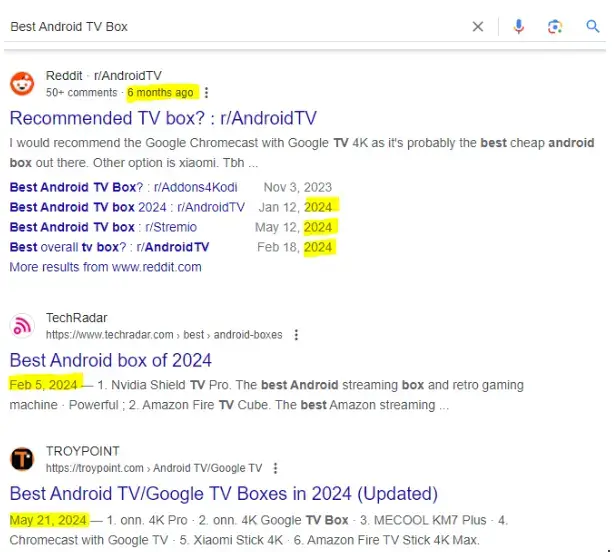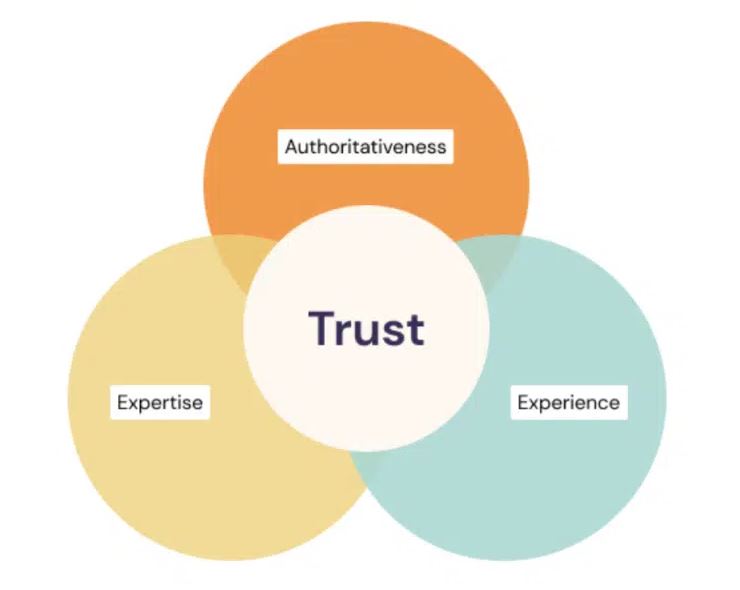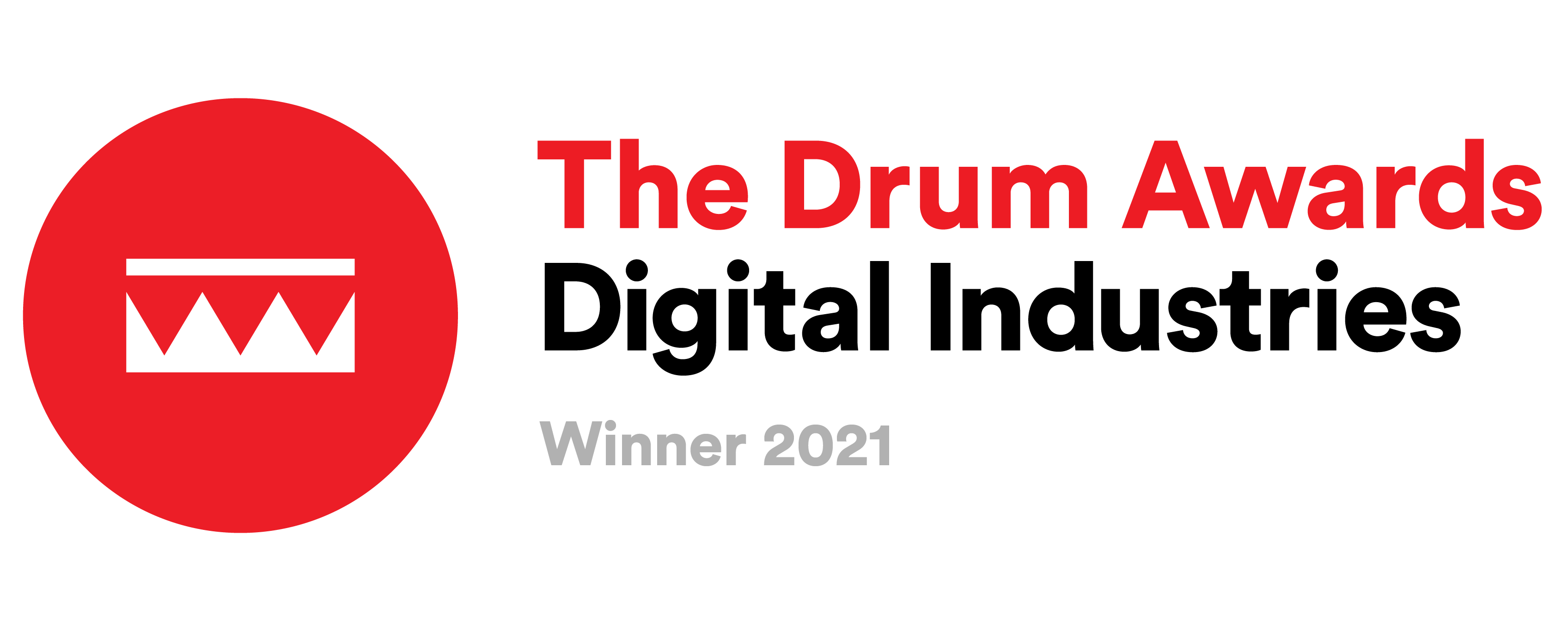Top Google Search Ranking Factors for SEO – The 20 that really matter in 2024

Ready to rank your business site at the top of the SERP? In this article, we will discuss the most important ranking factors that the Google search algorithm takes into account in 2024. Plus you get a BONUS – main takeaways from Google Search Ranking Factors Documentation Leak!
Search Engine Optimization (SEO) is a field that is constantly evolving. Google, for example, regularly adjusts the algorithm that decides if, when, where, and how to show a specific result on the SERP, with the overall mission of providing the most relevant and reliable information. There are over 200 known ranking factors, but what is important to keep in mind is the 80-20 rule: Around 80% of the actual impact on a site’s ranking comes from around 20% of the Google Search Ranking Factors.
Google Ranking Factors – what has changed during 2024?
- The freshness of content becomes one of the most important ranking signals, indicating high relevance.
- Trustworthiness in the YMYL fields demonstrates yet another growing trend as a major ranking factor.
- Mobile usability received another enhancement, continuing to be one of the most critical factors.
- Link distribution diversity turns out to be more crucial than we thought. Diversifying the links between different sections of the site signals Google that the site provides a holistic view of a specific topic / field of expertise.
Here are the top Google Search ranking factors to consider if you want to rank at the top of the SERPs, followed by the 2024 highlights and best practices.
On-Page SEO Ranking Factors
1. Content Quality
A well-ranking content is unique, in-depth, and covers a broad spectrum of its respective subject.
Google rewards uniqueness – content must provide the user with valuable information and insights, preferably such that are not found elsewhere, and should incorporate engaging visual elements to complement the written content. Remember, quality beats quantity every time. Focus on value, not word count.
Relevance is the key – The content should be written in a tone of voice that corresponds to the targeted readers’ style & level of understanding, be informative, and remain relevant to the website’s main goal and topic.
Content Structure – If it’s easy for the user, it’s easy for the crawlers. Organize your content logically, with a clear hierarchy, making it easily scannable for users and understandable for search engines, while utilizing HTML elements effectively to support the content structure.
2. Content Length
There is no clear rule of thumb regarding the optimal word count for an article since it varies per subject; however, longer, more comprehensive content typically achieves higher rankings. A study by Neil Patel reveals a correlation between content length and top Google search positions.
Keep in mind that the length of your content should express its quality and in-depth, with each sentence providing additional, valuable pieces of much-needed information.
Investigate your potential readers’ possible queries, needs, and pain points and address them with professionalism and accuracy. Give them a reason to share your content, and stabilize your site as an authority in its field, not by a long collection of words, but by answering as many queries as possible. Complex topics should be divided into easily digestible segments, each corresponding to one idea emphasized in clear headers, short sentences, and visuals like tables, bullet points, infographics, etc.
3. Content Freshness
The Google Freshness Algorithm is a real game changer. The algorithm was originally rolled out in June 2010 and has had a powerful impact over the years. If you’re a big publisher with a lot of old content that does not rank, updating old articles could be huge. Google seems to be somewhat biassed toward new materials, and rewards regularly updated content, while making sure the SERP features are up to date. Take, for example, a search for “Best Android TV Box”;
The first results are the most up-to-date ones. The freshness algorithm updates much faster than other core algorithms that Google updates. We’ve seen that it only takes a few days to see an impact in the SERP when we’ve updated our clients’ old articles.
Bear in mind that content that doesn’t get regularly updated has the lowest storage priority for Google and is unlikely to appear in top SERP.
4. E-E-A-T (Experience, Expertise, Authoritativeness, Trustworthiness) and Information Accuracy
On December 15, 2022, Google updated the quality rater E-A-T to E-E-A-T. The extra “E” refers to Experience, which is another factor Google uses in order to evaluate search rankings.
The additional Experience requirement means that the content was produced with a specific proficiency, degree, or even a real use of the product or service. Or in Google’s words – “a first-hand, life experience” of any topic that a site presents.
E-E-A-T signals are still very important for sites that have beneficial purposes, especially for those that cover topics that can potentially impact a person’s health or finances (YMYL, “Your Money or Your Life”). To optimize for academic credibility and avoid unproven claims, Google recommends citing scholarly sources whenever possible.
Author Expertise
Google’s algorithm seems to prefer content written by subject matter experts, such as people with formal training or education in the subject and those with a reputation in their field that is recognized by others. It should be easy to find the person responsible for the content, as well as the website’s contact information. For more details, check out the latest Google Quality Raters Guidelines.
5. Rankbrain
Another important Google ranking signal is RankBrain, which aims to provide the most relevant and useful results by better understanding user intent behind a search query. RankBrain uses machine learning to understand complex searches and their relatedness to particular topics, while taking into account how the user behaves towards the exact set of search results. So, search results that have more success with users get rewarded with higher rankings.
Read more about RankBrain in our dedicated article Understanding Google Rankbrain.
A Note About MUM: Google’s Multitask Unified Model
Launched in June 2021, MUM continues to be relevant in 2024, allowing Google to process complex queries more efficiently. It improves user intent recognition, as well as the ability to process visual elements in the context of SEO.
6. Usage of keywords
Well, this is probably the basis of an on-page SEO. When starting an SEO project with thorough keyword research, consider the user intent in your decision-making. Don’t underestimate the importance of long tails & semantic keywords as a significant portion of your SEO strategy.
- Metadata still counts! Use your main targeted keywords in the Title Tag, Headers, and, though it seems a bit outdated – in the meta description, to support CTR.
- Make fair use of your targeted keywords and semantical terms throughout the article.
- Invest in an in-depth anchor audit to make sure your internal links’ anchors are in correlation with your overall SEO strategy.
yellowHEAD Tip: Use Google’s semantic search to optimize keyword targeting in your articles. Semantic queries can be found by browsing the “related search” results at the bottom of the Google search results page.
Off-Page SEO Ranking Factors
7. Backlinks
In 2024, backlinks continue to be one of the strongest ranking signals in Google’s search algorithm. The more links you have from multiple high-authority domains, the better your chances are to rank well for top keywords. Online marketers should pay close attention to their backlink profiles, especially given spam updates, which clean and filter sites with low-quality backlink profiles.
The Link Spam Updates
Google makes major efforts to “clean” spammy, unnatural links. The main aim of these updates is to neutralize spammy/unnatural links and remove all credits they gained.
One of the latest spam updates took place in March 2024, followed by a fresh spam update that started rolling out in June 2024.
SpamBrain
Google is fighting spam links with an AI-based effective solution – “SpamBrain”. This machine learning system can detect both sites buying links and sites with the purpose of passing outgoing links.
If links between sites are of a commercial nature, it’s very important to mark them by using the “rel=”sponsored”, “rel=”nofollow” tags, or other rel values according to Google’s specifications. This will help prevent external links from being labelled as spam and thus negatively impacting your rankings.
What are the Key Components of the Backlinks Ranking Factor?
- The amount of links to a certain domain / URL – Build a strategy to create new collaborations gradually over time and keep those links coming in!
- The quality, authority and trustworthiness of the linking domains – Partner with relevant, highly authoritative websites in the relevant field, to create linking opportunities
- Backlinks diversity – Use a mix of different anchors (Branded, Generic, CTAs), different TLDs, types of links (follow vs. no-follow, image vs. textual, etc.). Diversify also the pages you are targeting with external links.
- Commercial Links Labelling – Properly label links with commercial intent to avoid spam penalties and ensure compliance with Google’s guidelines.
8. Social Signals
Social signals coming from Facebook, Reddit, Quora, Pinterest, and other social media platforms also correlate with search rankings. This is not to say that a strong online social presence alone can drive organic traffic, but sites that combine brand power and social signals with efforts across all other SEO channels can achieve greater search visibility.
Technical Ranking Factors
9. Page Experience
Core Web Vitals
Adding core web vitals as a ranking factor aims to reward sites with fast page speeds, good loading, interactivity, and visual stability. It’s measured by Largest Contentful Paint, First Input Delay, and Cumulative Layout Shift accordingly. Google’s goal is to provide users with search results composed of sites that provide the best user experience.
CWV first became a mobile ranking factor in August 2021 and a desktop ranking factor in February 2022, rolling out over the course of two months.
According to Google, “page experience is a ranking signal, not a ranking system.” There is no assurance that it will have a direct impact on rankings since Google has not provided a clear answer. However, as is customary with Google’s continuous redefinition, it is advisable to err on the side of caution.
Below is information regarding the specific meaning of these signals:
- Largest Contentful Paint: measures the time it takes to display the largest element that appears on the screen. This element can be a text, image, video, or anything else dependent on the page layout. To improve LCP, you should look for ways to minimize or remove render-blocking resources, improve server response time and resources load time.
- First Input Delay: aims to measure responsiveness aka. the time it takes for a page to respond to the user’s first interaction. Breaking up long tasks, optimizing the page for interaction readiness, and reducing JavaScript execution time can help you get a good FID score.
- Cumulative Layout Shift: measures visual instability of the content and sums up all layout shifts that occur on the page. In order to get a green CLS score, you should:
- a) Avoid dynamically injected content
- b) Dedicate defined space for ads
- c) Make sure all images have defined dimensions and fonts are rendered without significant visual instability
No Intrusive Interstitials
The last Core Web Vitals factor depends on the use of interstitials that are intrusive, such as ones that cover the entire page. Google has warned sites against using intrusive interstitials as well. To avoid this from being an issue, Google recommends using banners that don’t take up the entire page space. It will also make it easier for both search engines and users alike to reach the page content.
10. Page Speed
With a general mobile-first indexing approach from Google, page speed has become more crucial than ever. Websites with slow page speeds have a harder time ranking at the top of the SERPs. Fortunately, in November 2021, Google released a revamped version of the Pagespeed Insights Tool, which makes page speed optimization more straightforward than ever.
11. Mobile Usability
Mobile usability encompasses the ease with which users can interact with and navigate a site on a mobile device.
This includes:
- All interactive elements on the touchscreen should be large enough and appropriately spaced for touch-click interaction
- The UI should be intuitive and provide a positive user experience
- The mobile version should be accessible to all users, including those with disabilities
- The site should be minimizing users’ efforts by keeping an optimal number of steps required to complete tasks (loke filling out forms)
Google announced mobile-first indexing in 2016 and this meant that a website’s compatibility with mobile started to directly affect its search rankings. In the past, web designers built desktop versions first, then mobile; today, with mobile usage surpassing desktop, websites need to prioritize mobile versions to provide a better user experience. At the beginning of its release, Google’s mobile-first approach changed search results, especially when it came to local results. After the update, users began receiving results that better targeted their current location and increasingly indicated that geolocation actively affected local search results on desktops as well.
12. Mobile Friendliness
Mobile-friendliness addresses the quality of design and optimization for a mobile view of a website.
This includes:
- Responsive design that adjusts automatically to different screen sizes
- Easy navigation
- Readable text (the font and size of a text should be easy to read without zooming in)
- Fast loading speed (Optimized images, scripts, and other elements to ensure quick load times)
- Avoiding the usage of technologies that are not supported on mobile devices
13. Secure sites (HTTPS / SSL)
This was first announced in August 2014 on the Official Google Webmaster Central Blog, saying that:
“Security is a top priority for Google. We invest a lot in making sure that our services use industry-leading security, like strong HTTPS encryption by default. That means that people using Search, Gmail and Google Drive, for example, automatically have a secure connection to Google.”
Ever since October 17, 2017, Google has warned webmasters about using the HTTP protocol with sites where users are required to enter data. Although this factor has been removed from Google’s ranking systems list, it still deserves attention, especially if a site has not yet made the necessary changes for some reason.
User Engagement Ranking Factor
14. User experience
It’s hard to say exactly how to measure the effect of UX, as it varies per industry and demographic. We can say that the basic definition would measure how easy-to-use & intuitive is your website and does it offer a positive experience to the user.
User Engagement, measured by bounce rate, time spent on the page, and pages visited per session, is a strong indicator of a positive UI and quality content.
We do see a strong correlation between an accurate UI/UX and good placements on the SERP. Remember: your site has to be functional first.
Domain Factors
15. Branded Searches
Branded searches provide a strong signal to Google’s search algorithm. The more traffic a website gets from branded searches, the more it will be recognized by the algorithm
16. Domain Power
In the past, exact-match domains were a sure-fire way to boost organic search visibility. While not as foolproof as before, domains still have influence. With Google’s smarter algorithm, we do still see two major verticals of domain power:
Exact-match domains
Exact-match domains still carry a lot of weight. Take a search for “cars”. We would expect to find popular car-related brands at the top of the search results (Ford, BMW, etc.). Instead, we get an exact match, “cars.com”.
Domain Seniority
Domain age is another major ranking factor. New domains have a harder time ranking for top keywords, while domains with an extended track record seem to hold top positions for longer.
Local Search Results
17. Local SEO
In November 2021, Google updated how local search results are formulated by rebalancing the different factors that determine rank. Local search results are ranked by relevance, prominence, and distance, though Google hasn’t provided any details on how heavily each of them plays a role after this new update.
Product Review Update
When it comes to local SEO, having high-quality product reviews is the most prominent ranking factor. Throughout 2021-2022, Google made a few important updates to how product reviews rank in search results, and some of the product review best practices include:
- Giving readers the option to purchase from the seller of their choice by providing links to a variety of sellers.
- Providing audio, visual, or any other links that share a personal experience with the product to show that the review is authentic and reflects real expertise.
- Showing quantitatively how the product compares to others in terms of different performance measurements.
- Use purchasing advice in front of users and reward creators who provide helpful, in-depth, and authentic content.
Site Architecture ranking factors
18. Internal linking structure
A wise internal linking strategy can benefit in various ways:
- The anchor text is another opportunity to let the algorithm know what the linked page is all about
- In terms of UX, interlinks, when structured correctly, drive clicks and signal a positive user engagement with the content
- Innerlinks contribute to Google’s understanding of the site’s hierarchical structure and ease crawlability, navigation, and indexing
19. URL structure
While not as crucial as backlinks or content quality, a clear, well-organized URL structure can contribute to ranking efforts. Easily readable, relevant URLs help the search engine understand the purpose of the page and its relevance to the user query; on the user’s side, it can enhance CTR and lower bounce rate thanks to matching expectations regarding the content you are about to read.
20. Crawlability & Indexing
XML Sitemap helps search engines discover and index the parts of your website that are most important, ensuring that even the deepest pages are not missed.
Robots.txt suggests to the bots which parts of the site they should crawl, and which to ignore, optimizing search efficiency and crawl budget, preventing the indexing of duplicated content.
Canonical tags specify the preferred/original version of a certain URL, ensuring that search engines consolidate ranking signals and avoid indexing multiple versions of the same content that might result in duplicate content.
2024 yellowHEAD Bonus: Highlights of the Google Search Ranking Factors Documentation Leak
So, that happened. In March 2024, thousands of confidential documents coming from Google’s content API were revealed, providing us a rare glimpse into the way Google’s algorithm actually works. Here are the main takeaways from the documentation leak:
PageRank Variations
Google uses different types of PageRank to evaluate the importance of web pages. Imagine Google as a cocktail mixologist with seven different PageRank recipes, each giving a unique twist to how link authority is calculated. So, while traditional PageRank analyzes link structure, new variants consider factors like content relevance and user engagement.
Site-Wide Authority Metrics
Think of site authority metrics as Google’s way of playing detective with a magnifying glass. By looking at overall authority signals like Chrome browser traffic, Google decides how individual pages rank. More traffic, more trust, less bumbling around in the rankings.
User Behavior Data: navBoost and NSR Scores
NavBoost prioritizes navigation links to enhance user experience, while NSR (Normalized Site Rank) scores rank pages based on site-wide metrics and individual page quality. NavBoost is like Google’s backstage pass to a rock concert. It peeks at how users mosh around with the search results and re-ranks them accordingly. If your content is the star of the show, NavBoost makes sure it gets a standing ovation.
Page Embeddings
Using page embeddings and relevance, you can help Google understand the content of a specific page in the wide context of the entire website.
Site Focus and Site Radius
Site focus evaluates how well a website’s content aligns with its primary topics, while site radius considers the breadth of topics a site covers and its overall relevance.
Spam Detection
Spam detection is Google’s spam-fighting superhero squad. They swoop in to penalize keyword stuffing and anchor spam, making sure your content isn’t the villain in the search narrative.
Indexing Storage & content Freshness
Indexing storage is like Google’s memory palace, prioritizing content that gets a fresh coat of paint regularly. Think of it as favoring the friend who updates their social media often, keeping their stories interesting and current, rather than the one who still talks about their 2010 vacation.
Fresh new links are prioritized as well, as they tend to be more relevant and indicative of current trends and information.
User engagement
Data received from Chrome browsers regarding click data, pages per session and other metrics that imply the user’s level of engagement with the content, help the algorithm to improve the query’s relevance. Highly engaged users = Relevant, quality content.
Google ranking factors in 2024 – The complete list
Domain Factors
1. Domain Age
2. Keyword Appears in Top-Level Domain
3. Domain Registration Length
4. Keyword in Subdomain Name
5. Domain History
6. Exact Match Domain
7. Public vs. Private WhoIs
8. Penalized WhoIs Owner
Page-Level Factors
9. Keyword in Title Tag
10. Title Tag Starts with Keyword
11. Keyword in Meta Description Tag
12. Keyword in H1 Tag
13. Keyword Usage in Document
14. Content Length
15. Table of Contents
16. Keyword Density
17. Latent Semantic Indexing (LSI) Keywords in Content
18. LSI Keywords in Title and Description Tags
19. Page Loading Speed
20. Duplicate Content
21. Rel=Canonical
22. Image Optimization
23. Content Updates
24. Historical Updates
25. Keyword Prominence
26. Keyword in H2, H3 Tags
27. Outbound Link Quality
28. Outbound Link Theme
29. Grammar and Spelling
30. Syndicated Content
31. Helpful Supplementary Content
32. Number of Outbound Links
33. Multimedia
34. Number of Internal Links Pointing to Page
35. Quality of Internal Links Pointing to Page
36. Broken Links
37. Reading Level
38. Affiliate Links
39. HTML Errors/W3C Validation
40. Domain Authority
41. Page’s URL Length
42. URL Path
43. Human Editors
44. Page Category
45. WordPress Tags
46. Keyword in URL
47. URL String
48. References and Sources
49. Bullets and Numbered Lists
50. Priority of Page in Sitemap
51. Too Many Outbound Links
52. User-Friendly Layout
53. Parked Domains
54. Useful Content
Site-Level Factors
55. Content Provides Value and Unique Insights
56. Contact Us Page
57. Domain Trust/TrustRank
58. Site Architecture
59. Site Updates
60. Presence of Sitemap
61. Site Uptime
62. Server Location
63. SSL Certificate
64. Terms of Service and Privacy Pages
65. Duplicate Meta Information on Site
66. Breadcrumb Navigation
67. Mobile Optimization
68. YouTube
69. Site Usability
70. Use of Google Analytics and Google Search Console
71. User reviews/ Site Reputation
Backlink Factors
72. Linking Domain Age
73. # of Linking Root Domains
74. # of Links from Separate C-Class IPs
75. # of Linking Pages
76. Backlink Anchor Text
77. Alt Tag (for Image Links)
78. Links from .edu or .gov Domains
79. Authority of Linking Page
80. Authority of Linking Domain
81. Links from Competitors
82. Links from Expected Websites
83. Links from Bad Neighbourhoods
84. Guest Posts
85. Links from Ads
86. Homepage Authority
87. Nofollow Links
88. Diverse Types of Links
89. “Sponsored” or “UGC” Tags
90. Contextual Links
91. Excessive 301 Redirects to Page
92. Internal Link Anchor Text
93. Link Title Attribution
94. Country TLD of Referring Domain
95. Link Location in Content
96. Link Location on Page
97. Linking Domain Relevancy
98. Page-Level Relevancy
99. Text Around Link Sentiment
100. Linking Domain Title Tag Relevancy
101. Positive Link Velocity
102. Negative Link Velocity
103. Links from Real Sites vs. Splogs
104. Natural Link Profile
105. Text Around Link Sentiment
106. Backlink Age
107. Links from Authority Sites
108. Links to Homepage Domain that Page Sits On
109. Nofollow Links
110. Diverse Links
111. Contextual Links
112. 301 Redirects
User Interaction
113. Organic Click-Through Rate for a Keyword
114. Organic CTR for All Keywords
115. Dwell Time
116. Bounce Rate
117. Direct Traffic
118. Repeat Traffic
119. Blocked Sites
120. Chrome Bookmarks
121. Google Toolbar Data
122. Number of Comments
123. Dwell Time
Special Google Algorithm Rules
124. Query Deserves Freshness
125. Query Deserves Diversity
126. User Browsing History
127. User Search History
128. Geo Targeting
129. Safe Search
130. Google+ Circles
131. DMCA Complaints
132. Domain Diversity
133. Transaction Searches
134. Local Searches
135. Top Stories Box
136. Big Brand Preference
137. Shopping Results
138. Image Results
139. Easter Egg Results
140. Single Site Results for Brands
Social Signals
141. Number of Facebook Likes
142. Facebook Shares
143. Facebook Comments
144. Pinterest Pins
145. Votes on Social Sharing Sites
146. Number of Tweets
147. Twitter Authority
148. Official LinkedIn Company Page
149. Authority of Google+ User Accounts
150. Number of Google+1’s
151. Google+ Authorship Verification
152. Social Signal Relevancy
153. Site Level Social Signals
Brand Signals
154. Brand Name Anchor Text
155. Branded Searches
156. Brand + Keyword Searches
157. Site Has Facebook Page and Likes
158. Site Has Twitter Profile with Followers
159. Official LinkedIn Company Page
160. Employees Listed on LinkedIn
161. Legitimacy of Social Media Accounts
162. Brand Mentions on News Sites
163. Co-Citations
164. Number of RSS Subscribers
165. Brick-and-Mortar Location with Google+ Local Listing
166. Website is Tax Paying Business
On-Site Webspam Factors
167. Panda Penalty
168. Outbound Link Quality
169. Outbound Link Theme
170. Linking to Bad Neighbourhoods
171. Redirects
172. Popups/Ads
173. Site Over-Optimization
174. Excessive PageRank Sculpting
175. IP Address Flagged as Spam
176. Meta Tag Spamming
Off-Page Webspam Factors
177. Penguin Penalty
178. Link Profile with High % of Low-Quality Links
179. Low-Quality Directory Links
180. Links from Article Directories
181. Links from Widgets
182. Links from the Same Class C IP
183. “Poison” Anchor Text
184. Manual Actions
185. Selling Links
186. Google Sandbox
187. Disavow Tool
188. Reconsideration Request
Other Factors
189. Google News Box
190. Google Discover
191. Google Image Search
192. Featured Snippets
193. Knowledge Graph
194. Voice Search Optimization
195. Local SEO
196. HTTPS as a Ranking Signal
197. Mobile-First Indexing
198. Core Web Vitals
199. Passage Indexing
200. Structured Data Markup
201. E-A-T (Expertise, Authoritativeness, Trustworthiness)
202. User Intent Matching
203. Page Experience Update
Final Thoughts
SEO has a huge impact on business. Google’s search algorithm is based on ranking factors that encourage high-value content and a great user experience. Google is constantly getting better at measuring how users interact with content. Understanding the core Google ranking factors can make or break your online presence; get well-versed in the basics, keep your eye out for updates, and you’ll have a good chance of succeeding.
To learn more on how to proactively prepare websites for the next Google Core Updates, take a look at our article, How to Prepare for the Next Google Algorithm Update.
*Originally written by Doron Wolffberg and updated by Ehud Simhi in May 2023






















